Related Research Articles
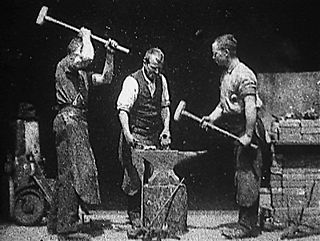
Blacksmith Scene is an 1893 American short black-and-white silent film directed by William K.L. Dickson, the Scottish-French inventor who, while under the employ of Thomas Edison, developed one of the first fully functional motion picture cameras. It is historically significant as the first Kinetoscope film shown in public exhibition on May 9, 1893, and is the earliest known example of actors performing a role in a film. It was also the first U.S. motion picture film ever copyrighted that same year. 102 years later, in 1995, Blacksmithing Scene was selected for preservation in the United States National Film Registry by the Library of Congress as being "culturally, historically, or aesthetically significant". It is the second-oldest film included in the Registry, after Newark Athlete (1891).

Hoosiers is a 1986 American sports drama film written by Angelo Pizzo and directed by David Anspaugh in his feature directorial debut. It tells the story of a small-town Indiana high school basketball team that enters the state championship. It is inspired in part by the Milan High School team who won the 1954 state championship.

Louisiana Story is a 1948 American black-and-white drama film directed and produced by Robert J. Flaherty. Its script was written by Frances H. Flaherty and Robert J. Flaherty. Although it has historically been represented as a documentary film, the events and characters depicted are fictional. There is not enough factual or educational material in the film to warrant classifying it as docufiction. The film was commissioned by the Standard Oil Company to promote its drilling ventures in the Louisiana bayous.
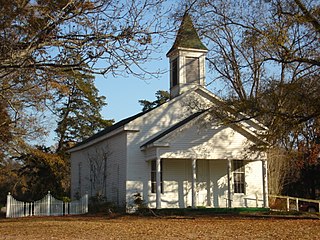
Richland Parish is a parish located in the North Louisiana Delta Country in the U.S. state of Louisiana, known for its fertile, flat farmland, cane brakes, and open spaces. The parish had a population of 20,043 at the 2020 United States census. The name Richland was chosen due to the rich production from farming. The parish seat and largest community is Rayville.

Lake Charles is the fifth-most populous city in the U.S. state of Louisiana, and the parish seat of Calcasieu Parish, located on Lake Charles, Prien Lake, and the Calcasieu River. Founded in 1861 in Calcasieu Parish, it is a major industrial, cultural, and educational center in the southwest region of the state. As of the 2020 U.S. census, Lake Charles's population was 84,872.

All My Babies: A Midwife's Own Story is a 1953 educational film written, directed and produced by George C. Stoney which was used to educate midwives in the Southern United States and promote greater cooperation between midwifery and the modern health system. It was produced by the Georgia Department of Public Health. The film follows Mary Francis Hill Coley (1900–66) an African American midwife from Albany, Georgia who helped deliver over 3,000 babies in the middle part of the 20th century. On December 17, 2002, it was announced by Librarian of Congress James H. Billington that "All My Babies, George Stoney's landmark educational film used to educate midwives in Georgia and throughout the South" was among the annual selection of 25 motion pictures to be added to the National Film Registry.

Augusta is a city on the central eastern border of the U.S. state of Georgia. The city lies directly across the Savannah River from North Augusta, South Carolina at the head of its navigable portion. Georgia's third most populous city, Augusta is located in the Fall Line section of the state.

The Kiss is an 1896 film, and was one of the first films ever shown commercially to the public. Around 18 seconds long, it depicts a re-enactment of the kiss between May Irwin and John Rice from the final scene of the stage musical The Widow Jones. The film was directed by William Heise for Thomas Edison. The film was produced in April 1896 at the Edison Studios of Edison, the first film studio in the United States. At the time, Edison was working at the Black Maria studios in West Orange, New Jersey.
Precious Images is a 1986 short film directed by Chuck Workman. It features approximately 470 half-second-long splices of movie moments through the history of American film. Some of the clips are organized by genre and set to appropriate music; musicals, for example, are accompanied by the title song from Singin' in the Rain. Films featured range chronologically from The Great Train Robbery (1903) to Rocky IV (1985), and range in subject from light comedies to dramas and horror films.

The Southeastern United States, also referred to as the American Southeast, the Southeast, or the South, is a geographical region of the United States located in the eastern portion of the Southern United States and the southern portion of the Eastern United States. The region includes a core of states that reaches north to Maryland and West Virginia, bordering the Ohio River and Mason–Dixon line, and stretches west to Arkansas and Louisiana.

Duck and Cover is a 1951 American civil defense animated and live action social guidance film that is often mischaracterized as propaganda. It has similar themes to the more adult-oriented civil defense training films. It was widely distributed to United States schoolchildren in the 1950s, and teaches students what to do in the event of a nuclear explosion.
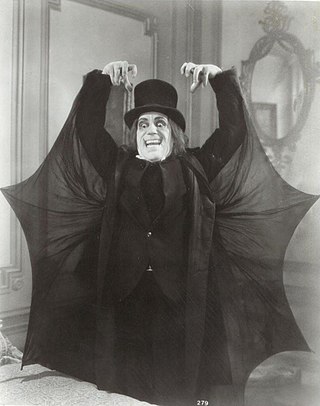
A lost film is a feature or short film in which the original negative or copies are not known to exist in any studio archive, private collection, or public archive. Films can be wholly or partially lost for a number of reasons. Early films were not thought to have value beyond their theatrical run, so many were discarded afterward. Nitrate film used in early pictures was highly flammable and susceptible to degradation. The Library of Congress began acquiring copies of American films in 1909, but not all were kept. Due to improvements in film technology and recordkeeping, few films produced in the 1950s or beyond have been lost.

Lady Helen's Escapade is a short American comedy film produced in 1909, directed by D. W. Griffith. It is about the escapades of Lady Helen working as a domestic in a boarding house.
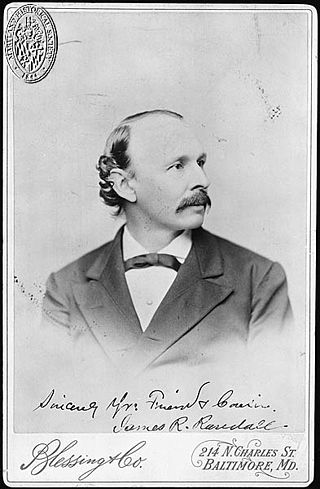
James Ryder Randall was an American journalist and poet. He is best remembered as the author of "Maryland, My Maryland".
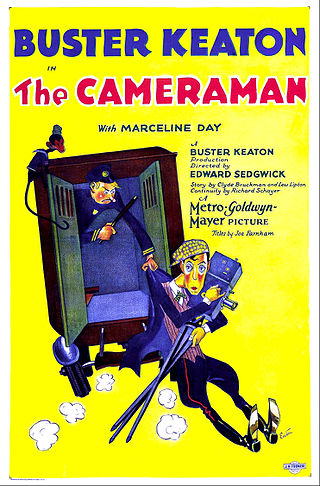
The Cameraman is a 1928 American silent romantic comedy film directed by Edward Sedgwick and an uncredited Buster Keaton. The picture stars Keaton and Marceline Day. The Cameraman was Keaton's first film under contract to Metro-Goldwyn-Mayer. It is considered by fans and critics to be one of Keaton's best, and was added to the National Film Registry in 2005 as being deemed "culturally, historically, or aesthetically significant".
Hands Up! is a 1926 American silent comedy film directed by Clarence Badger, co-written by Monte Brice and Lloyd Corrigan, and starring Raymond Griffith, one of the great silent movie comedians. The film features fictional incidents involving actual historical figures such as Abraham Lincoln, Brigham Young, and Sitting Bull.

The National Film Registry (NFR) is the United States National Film Preservation Board's (NFPB) collection of films selected for preservation, each selected for its historical, cultural and aesthetic contributions since the NFPB's inception in 1988.
John Mathews was an early American pioneer in Augusta County, Virginia, where he served as an officer in the county militia, a vestryman for Augusta Parish, and a justice of the peace. He was the progenitor of the Mathews political family from Virginia and the American South. His sons included George Mathews (1739–1812) and Sampson Mathews. Other descendants include Henry M. Mathews (1834–1884) and Mason Mathews Patrick (1863–1942).
The Indiana University Libraries Moving Image Archive (IULMIA) is a major repository for nontheatrical film, video, and related archival materials located in Bloomington, Indiana.
References
- ↑ Cooley, Heidi Rae (2014). Finding Augusta: Habits of Mobility and Governance in the Digital Era. Dartmouth College Press. doi:10.1349/ddlp.3556. ISBN 978-1-61168-523-7.
- ↑ "2012 National Film Registry Picks in A League of Their Own". Library of Congress. Retrieved 2020-12-18.
- ↑ "Collection: Scott Nixon home movies | ArchivesSpace Public Interface". archives.library.sc.edu. Retrieved 2020-12-18.
- ↑ "The Augustas--Nixon--home movies, 1930 | ArchivesSpace Public Interface". archives.library.sc.edu. Retrieved 2020-12-18.
- ↑ "Augustas of the USA--Nixon--home movies, no date | ArchivesSpace Public Interface". archives.library.sc.edu. Retrieved 2020-12-18.
- ↑ "Augustas of the USA--Nixon--home movies". digital.tcl.sc.edu. Retrieved 2020-12-18.
- ↑ Press Release: Cinematic Firsts Enshrined in 2012 Film Registry
- ↑ "Complete National Film Registry Listing". Library of Congress. Retrieved 2020-09-16.